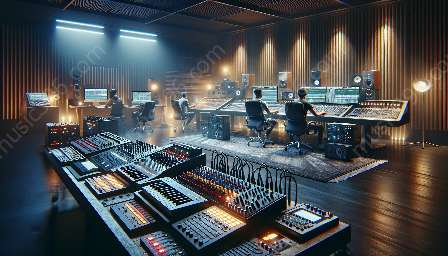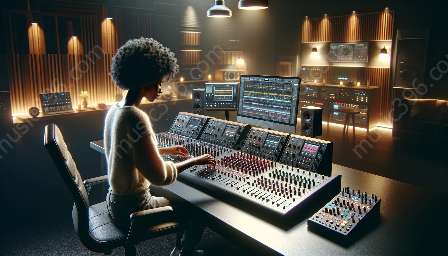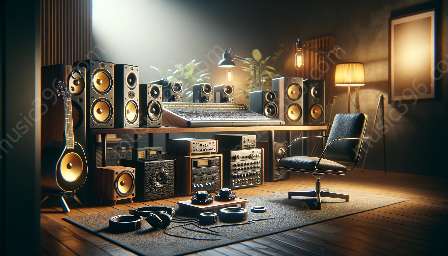When we delve into the world of noise-cancelling headphones, we inevitably encounter the fascinating intersection of psychoacoustic research and music technology. In this exploration, we'll unravel the underlying principles of psychoacoustics and its profound influence on the design of noise-cancelling headphones. From the intricate workings of the human auditory system to the innovative engineering behind these devices, let's embark on a comprehensive journey that illuminates the interplay between these interconnected realms.
The Foundations of Psychoacoustic Research
Psychoacoustics, a branch of experimental psychology, delves into the intricate relationship between sound and the human auditory system. It seeks to understand how humans perceive and interpret sound, encompassing aspects such as pitch, timbre, and volume. Through rigorous research, psychoacousticians aim to unravel the complexities of auditory perception, shedding light on phenomena like hearing thresholds, masking effects, and binaural processing.
This field's discoveries have profound implications for various industries, including music technology and consumer electronics. By synthesizing knowledge from psychoacoustic research, music technologists can manipulate sound in ways that enhance the listening experience. Furthermore, developments in noise-cancelling headphones heavily rely on a deep understanding of psychoacoustic principles, paving the way for refined noise reduction and immersive audio environments.
The Evolution of Noise-Cancelling Headphones
Noise-cancelling headphones represent a pinnacle of technological innovation, designed to mitigate external noise and amplify desired sounds. By leveraging principles from psychoacoustic research, these devices target specific frequencies and employ advanced algorithms to neutralize unwanted auditory distractions. As such, the foundations of psychoacoustics play a pivotal role in shaping the capabilities and performance of noise-cancelling headphones.
Modern noise-cancelling headphones operate through a sophisticated system that integrates microphones, signal processing, and sound reproduction elements. These components work in tandem to analyze incoming sounds, generate an inverse sound wave, and orchestrate a coherent listening experience for the user. The culmination of psychoacoustic insights with cutting-edge engineering has propelled the evolution of noise-cancelling headphones, leading to enhanced comfort, superior sound quality, and unparalleled noise reduction.
The Influence of Psychoacoustics on Noise-Cancelling Headphones
The interconnected nature of psychoacoustics and noise-cancelling headphones is evident in the meticulous calibration of these devices. Manufacturers draw upon psychoacoustic principles to tailor noise-cancelling algorithms, ensuring a seamless integration with the complexities of human auditory perception. By harnessing psychoacoustic phenomena such as frequency masking and spatial hearing, engineers can fine-tune noise-cancelling headphones to optimize sound reproduction and environmental isolation.
Furthermore, psychoacoustic research informs the ergonomic design of noise-cancelling headphones, considering factors like head-related transfer functions and psychoacoustic modeling. This holistic approach enables the creation of headphones that not only deliver exceptional noise reduction but also exhibit a natural and immersive audio experience. As a result, users can delve into their favorite music, films, or podcasts without the intrusion of external disturbances, embracing an audio journey shaped by psychoacoustic ingenuity.
The Symbiotic Relationship with Music Technology
Music technology intertwines with both psychoacoustic research and noise-cancelling headphones, forming a symbiotic relationship that drives innovation and user-centric design. By assimilating psychoacoustic insights, music technologists can refine audio processing algorithms, parameter controls, and spatial audio delivery, culminating in an experiential journey that transcends conventional listening.
Moreover, the integration of noise-cancelling technology within music devices underscores the intrinsic linkage between music technology and psychoacoustic research. As users seek immersive and undisturbed listening experiences, the fusion of noise-cancelling capabilities with music technology amplifies the impact of psychoacoustic influences, offering a harmonious synthesis of cutting-edge technology and psychoacoustic finesse.
Conclusion
The entwined narrative of noise-cancelling headphones, psychoacoustic research, and music technology unravels a profound tapestry of human perception, engineering innovation, and auditory immersion. As these disciplines continue to converge, the resultant technological advancements strive to redefine the boundaries of audio excellence, shaping a future where the marriage of psychoacoustics and technology permeates every sonic encounter.

























